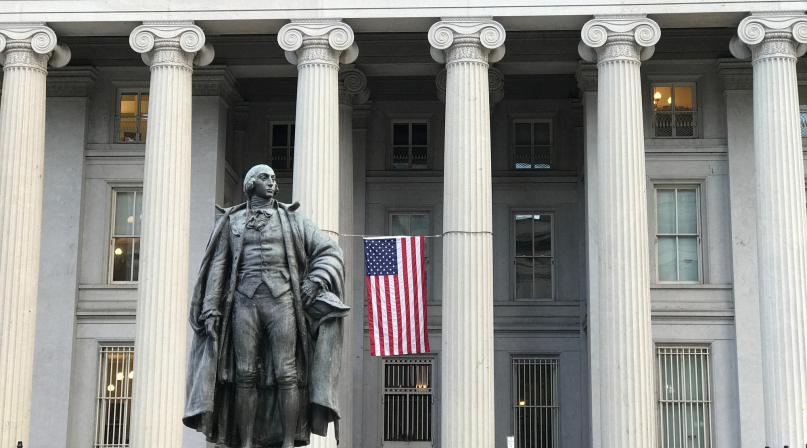Countdown to ARPA’s SLFRF obligation deadline: Top 5 insights for local governments
Author

Eryn Hurley
Upcoming Events
Related News

The December 31, 2024, deadline for obligating funds under the American Rescue Plan Act (ARPA) State and Local Fiscal Recovery Funds (SLFRF) program is fast approaching. With over $350 billion allocated to state and local governments, ensuring these funds are effectively obligated can make or break the recovery and prosperity of our communities. Here are the top five insights from the recent Listening Session that the National League of Cities (NLC) and National Association of Counties (NACo) held in partnership with the U.S. Department of Treasury to help local governments meet their goals, with a key focus on the critical area of revenue replacement.
You can find a recording for the webinar here and the slideshow presented here.
1. Revenue Replacement Is Not Automatic
While revenue replacement is the quickest, simplest, and most flexible funding available to municipalities through ARPA SLFRF there have been issues around reporting. All SLFRF recipients can classify at least $10 million of their allocations as revenue replacement or use a formula the Treasury provides to calculate their actual revenue lost as a result of the pandemic to classify a larger amount.
However, a common misconception is that claiming funds under the revenue loss category automatically fulfills the obligation requirement. However, Treasury clarified that revenue loss dollars must be obligated through a two-step process. Moving funds to a general fund without further action does not meet the criteria.
- Step One: Report claimed revenue loss: Elect either the $10 million Standard Allowance, up to the award amount, or calculate revenue loss according to the formula provided by Treasury.
- Step Two: Report projects under expenditure category 6. These projects must include:
- Amount of SLFRF funds budgeted, obligated, and expended (when applicable) for that specific project.
- Project description that summarizes the project in sufficient detail to provide an understanding of the major activities that will occur.
2. Understand What Constitutes an Obligation
For SLFRF purposes, an obligation is defined as a contract, subaward, interagency agreement, or similar transaction requiring payment. Payroll expenses for eligible employees may also count if the positions are established by December 31, 2024.
If you plan to use interagency agreements, ensure they are finalized by the obligation deadline and meet Treasury's specific conditions. You can find a template for an interagency agreement here.
3. Obligation Deadline =/= Spending Deadline
While the December 31, 2024, deadline requires funds to be obligated, spending can continue through December 31, 2026. This means you can align obligations with long-term priorities, such as workforce development, infrastructure, and affordable housing, as long as the obligations are finalized by December 31, 2024.
Key Opportunity: Consider personnel costs and multi-year contracts that align with your community’s recovery needs.
4. Avoid Common Errors
Errors in obligating and reporting SLFRF funds can lead to compliance issues, loss of funding, or delays in project implementation. Treasury highlighted several common mistakes to avoid:
- Failure to obligate funds by the deadline: Assuming funds claimed as revenue loss or moved into a general fund are automatically obligated without formal actions like contracts or payroll allocations.
- Incomplete personnel cost planning: Overlooking the requirement that all eligible positions must be established before December 31, 2024, even if funds will be expended later.
- Lack of documentation: Failing to provide detailed project descriptions, timelines, or records of obligations, making audits and compliance checks challenging.
- Neglecting reporting cycles: Missing key reporting windows to correct errors or update obligations, resulting in unclaimed or noncompliant funds.
5. Check Your Obligation Status
Ensure your obligation status is accurate by reviewing your most recent report on the Department of Treasury’s Data Dashboard. To help navigate the portal, Treasury provides an instructional video, which you can access here.
It’s important to confirm that Treasury’s records align with your municipality’s internal information. Discrepancies may occur due to:
- Previous reporting errors: These can be corrected during your next reporting period.
- Recent obligations: Funds obligated since your last reporting cycle may not yet be reflected in Treasury’s records.
Local governments have the tools and flexibility to make transformative investments in their communities. By focusing on proper obligation practices, avoiding common errors, and providing robust reporting, you can maximize the impact of ARPA dollars before time runs out.
For more guidance, visit Treasury’s SLFRF website and FAQs page.
Advocacy
Countdown to the ARPA SLFRF obligation deadline: What counties need to know before December 31, 2024
With the December 31, 2024 deadline for obligating ARPA State and Local Fiscal Recovery Funds quickly approaching, counties nationwide are assessing how best to allocate these critical resources.

Related News

What Counties Need to Know: ARPA SLFRF Non-Compliance Next Steps
Since in March 2021, the American Rescue Plan Act (ARPA) authorized the $350 billion State and Local Coronavirus Fiscal Recovery Fund (SLFRF), which provided $65.1 billion in direct, flexible aid to every county, parish and borough in America. Now that we are four years into the program’s implementation, compliance with reporting requirements is of utmost importance.

What Counties Need to Know: ARPA SLFRF Reporting Deadline
As counties continue to implement projects under the American Rescue Plan Act’s (ARPA) State and Local Fiscal Recovery Funds (SLFRF) program, accurate and timely reporting remains critical. To support counties in preparing their 2025 Annual or Q1 Project and Expenditure (P&E) Reports – due April 30, 2025 – NACo has developed the below frequently asked questions (FAQs) guide.

County Countdown – April 7, 2025
Every other week, NACo's County Countdown reviews top federal policy advocacy items with an eye towards counties and the intergovernmental partnership. This week features a budget reconciliation update, HHS restructuring and more.